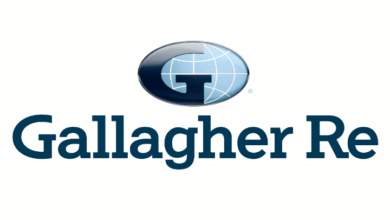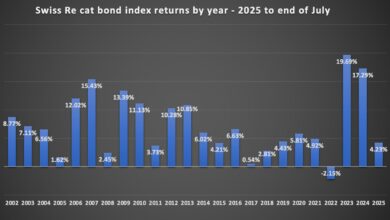A Game-Changer for Claims and Customer Service

Key Takeaways
- AI Agents for Insurance automate claims intake and fraud detection, speeding up processing and reducing errors.
- They enhance customer service with 24/7 support, personalized interactions, and seamless escalation to human agents.
- Insurers benefit from cost savings, improved accuracy, and better scalability during claim surges like natural disasters.
- Responsible adoption with strong data governance and human oversight is essential for building trust and regulatory compliance.
The insurance industry in the United States is undergoing a transformation driven by technological innovation. Among these innovations, AI agents — software entities powered by artificial intelligence and machine learning — are proving to be pivotal in reshaping how insurers handle claims and deliver customer service. Far from being a distant futuristic concept, AI agents are already here, impacting day-to-day operations and customer experiences in profound ways.
This blog unpacks how AI agents are transforming claims processing and customer service in the US insurance market — covering the tech behind them, key benefits, real-world examples, and challenges insurers and policyholders need to know now.

What Are AI Agents in Insurance?
First, let’s clarify what we mean by AI agents. In the AI insurance context, these are intelligent software programs that can autonomously interact with customers, analyze data, make decisions, and execute tasks traditionally performed by human agents. Unlike basic chatbots, AI agents utilize natural language processing (NLP), computer vision, predictive analytics, and machine learning to improve their effectiveness continuously.
They’re deployed across multiple touchpoints:
- Customer service interactions
- Claims intake and adjudication
- Policy management and renewals
In claims and customer service, AI agents can act as virtual assistants, advisors, and decision-support systems that accelerate workflows and enhance customer satisfaction.
The US insurance industry is vast and highly competitive, encompassing auto, health, life, home, and commercial insurance sectors. Some unique market pressures have accelerated AI adoption:
- Rising customer expectations: Modern consumers demand fast, convenient, and 24/7 service. Legacy systems and manual claims processes can’t keep up.
- Cost pressures: Insurers face pressure to reduce operational costs without sacrificing service quality.
- Complex claims: Increasing use of technology and more complex risk environments require faster, more accurate claims adjudication.
- Regulatory scrutiny: Compliance with state and federal regulations around consumer protection, data privacy (e.g., HIPAA for health, GLBA for financial data), and fair claims handling is paramount.
- Talent shortage: Finding and retaining experienced claims adjusters and customer service reps is an ongoing challenge.
These challenges create fertile ground for AI agents to step in and deliver scalable, efficient, and compliant solutions.

As you explore AI agents in insurance, remember to focus on their real impact—how they speed up claims, reduce errors, and provide nonstop support, transforming customer experiences and cutting costs.
The Current Landscape of Insurance Claims and Customer Service in the US
The Current Landscape of Insurance Claims and Customer Service in the US is marked by ongoing struggles with slow claims processing and rising customer demands, which many insurers are addressing through smarter technology solutions.
Traditional Challenges in Claims Processing
Claims handling in the US insurance industry has historically been a complex, time-consuming process. Many insurers still rely heavily on manual reviews, paperwork, and multiple layers of approval, which create bottlenecks and delays. This often leads to longer settlement times—sometimes weeks or even months—which frustrates policyholders needing timely assistance.
Additionally, the sheer volume of claims during peak events such as natural disasters can overwhelm traditional systems. Manual fraud detection methods, while necessary, are often reactive and resource-intensive, making it difficult for companies to quickly identify suspicious claims without slowing down the entire process.
Customer Service Bottlenecks and Consumer Expectations
Customer expectations have evolved rapidly, fueled by instant service experiences in other industries like retail and banking. Policyholders now expect 24/7 access to their insurance information, quick responses, and transparent communication throughout the claims process.
Unfortunately, many insurers still operate with limited customer support hours and insufficient digital channels, causing frustration and reduced trust. Call centers can be overloaded, leading to long wait times, while outdated systems struggle to provide personalized service or real-time updates.
In the US market, consumers also increasingly prefer self-service options and mobile-friendly platforms to manage policies and claims on their own schedules. Failure to meet these expectations risks losing customers to more agile competitors.
How AI Agents Revolutionize Claims Processing
Faster Claims Intake and Triage
Traditionally, filing a claim involves lengthy forms, waiting on hold with call centers, or in-person appointments with adjusters. AI agents revolutionize this by offering 24/7, automated claims intake through multiple channels:
- Conversational interfaces: Policyholders can report claims via chatbots on websites, mobile apps, or messaging platforms like SMS and Facebook Messenger.
- Voice assistants: AI-powered voice systems can guide claimants through the reporting process naturally.
- Document processing: AI agents extract information from photos of accident scenes, police reports, medical documents, or damage assessments using computer vision.
This automation dramatically reduces the time between incident occurrence and claim registration, enabling insurers to begin assessment earlier.
Intelligent Claims Triage and Routing
Not all claims require the same level of human intervention. AI agents analyze incoming claims data in real time, evaluating complexity, fraud risk, policy coverage, and potential settlement amounts. Based on this, they can:
- Approve simple claims automatically, such as minor auto repairs under a certain dollar limit.
- Escalate complex or suspicious claims for human review.
- Route claims to specialized adjusters or external experts.
This intelligent triage reduces backlog, optimizes adjuster workload, and speeds resolution.
Automated Damage Assessment
AI-driven image recognition tools assess vehicle damage or property loss from photos submitted by claimants. For example, an AI agent can:
- Identify damaged parts on a car and estimate repair costs based on historical data.
- Detect severity of property damage after a natural disaster using satellite or drone imagery.
Such automation cuts down the need for in-person inspections, reduces human error, and enables near real-time claim decisions.
Fraud Detection
Insurance fraud is a major cost driver in the US market, estimated to cost billions annually. AI agents use anomaly detection and pattern recognition to flag suspicious claims based on factors such as:
- Inconsistent claimant statements
- Duplicate or inflated damage claims
- Unusual claims history or timing
Machine learning models get better over time by learning from confirmed fraud cases, enabling proactive risk mitigation.
Our Problem: Too Many Leads, Not Enough Agents
 Grow Your Agency Faster with Agency Height Insurance Directory
Grow Your Agency Faster with Agency Height Insurance Directory
Your email has been registered. Redirecting…
Join our network of successful agents and start getting quality leads
Benefits of AI Agents for Insurance Companies and Customers
The benefits of AI agents for insurance companies and customers include lowering costs, boosting accuracy, improving customer satisfaction, and handling high claim volumes during peak times with ease.
Cost Reduction and Operational Efficiency
Automating repetitive tasks such as claim intake, document sorting, and policy management helps insurers reduce operational costs by 30–40%, according to McKinsey. It also frees staff for higher-value activities, improving overall productivity.
Improved Accuracy and Reduced Human Error
By removing manual data entry and enabling real-time validation, insurance firms reduce errors in claims processing and underwriting. This leads to fewer disputes and improved accuracy in decisions, enhancing the overall reliability of operations.
Enhanced Customer Satisfaction and Retention
Fast response times, 24/7 availability, and transparent communication drive higher levels of customer satisfaction. Research from Deloitte shows that personalized digital interactions and self-service capabilities significantly improve customer loyalty in the insurance sector.
Scalability During Peak Times (e.g., natural disasters)
During natural disasters or sudden spikes in claims, automation tools enable insurers to scale instantly without adding new staff or compromising service quality. Systems can triage claims, respond to FAQs, and push updates in real-time, maintaining customer trust when it matters most.
AI Agents Enhancing Customer Service
24/7 Availability with Intelligent Chatbots
Chatbots like GEICO’s “Kate” and Zurich’s Claims Bot provide instant help day or night—no hold music, no waiting in queue. GEICO’s assistant handles billing, policy questions, and claims in its app around the clock, eliminating the need for live agent support outside business hours.
Personalized Customer Interactions
Smart systems use each customer’s data—policy history, prior interactions, personal preferences—to offer suggestions and reminders.
Handling Complex Queries and Escalations
While chatbots efficiently handle routine questions, they also detect when issues are too complex and seamlessly escalate to human agents. This ensures policyholders get accurate support when they need it—especially for multi-faceted claims or special requests.
Real-World Examples from US Insurance Providers
- GEICO’s “Kate” assists with quotes, policy details, billing, and claims, boosting customer engagement and reducing pressure on human agents
- Allstate’s ABIE chatbot aids small business customers by providing answers on coverage, claims, and premium quotes, reducing call center volume by up to 30%
- Progressive’s Flo assistant offers instant help in giving quotes or tracking claims via mobile or web, improving response times and satisfaction
- Zurich’s chatbot (“Zuri” or “Zara”) guides customers through claims reporting and policy questions, resolving as many as 80% of queries without human intervention
- Lemonade’s Maya famously processed a $979 coat claim—from reports and fraud checks to payout—in under three seconds, demonstrating how instant service translates into high satisfaction rates above 90%.
These systems deliver instant, accurate, and personalized service whenever customers need it, while gracefully escalating complex issues—reinforcing trust, reducing costs, and elevating customer experience in the US insurance industry. This isn’t futuristic—it’s happening now.
Challenges and Concerns
Data Privacy and Security
Insurance data is highly sensitive. AI agents must comply with regulations like HIPAA (for health insurance) and GLBA, ensuring data encryption, secure access controls, and transparent data use policies. Breaches can cause reputational and financial damage.
Regulatory Compliance
State insurance regulators enforce strict rules around claims handling and consumer protection. AI-driven decisions must be explainable and auditable to avoid discriminatory or unfair practices. Insurers need governance frameworks to oversee AI agent deployment.
Workforce Impact
While AI agents improve efficiency, there are concerns about the displacement of human jobs. However, many experts see AI as augmenting human roles rather than replacing them entirely, freeing staff to focus on high-value tasks.
Accuracy and Bias
AI models trained on biased or incomplete data can perpetuate unfair outcomes, such as claim denials disproportionately affecting certain demographics. Continuous monitoring and model updates are essential.

To make AI agents effective and ethical in insurance, enforce strong data privacy, ensure AI decisions are transparent and auditable, support workforce shifts by focusing on augmentation, and regularly monitor AI models to prevent bias and ensure fairness.
Future Trends: What’s Next for AI Agents in Insurance?
What’s next for customer support and claims workflows in insurance? It’s the integration of smarter prediction, richer language understanding, and expansion into whole new lines of business—all designed to serve customers better and more proactively.
Advances in Language Understanding and Learning Systems
Expect technologies that can interpret nuanced language—tone, intent, even emotion—from customer messages and live chats. Recent research demonstrates how combining acoustic data with text analysis allows systems to recognize emotional cues and adapt responses accordingly, enabling more empathetic, precise communication in real time. This moves customer support beyond simple scripts to interactions that feel human.
Predictive Analytics for Proactive Customer Service
Insurance is transforming from reactive claims handling to anticipating needs ahead of time. Predictive models now analyze weather trends, health patterns, and usage data to forecast potential claims or risks. This enables insurers to reach out first— advising on risk reduction or adjusting coverage—before incidents occur. These tools help companies flag possible churn moments and tailor retention strategies, boost upsells, or deliver personalized offers at the right time.
Expansion into New Insurance Verticals (Health, Life, Commercial)
Expect these systems to spread beyond auto and home insurance. For example, predictive underwriting models now score applicants using unstructured text and alternative data sources. That means faster decisions and fairer premiums in health, life, and commercial lines alike. Insurers specializing in group health insurance are beginning to deploy claims‑scoring engines to speed reimbursements and improve transparency—tech trending globally, increasingly relevant in the US market as well.
Data Insights & Market Projections to Support the Story
Data insights and market projections paint a clear picture of the rapid evolution underway in the insurance industry. Over 70% of insurers plan to upgrade their real-time analytics capabilities within the next two years, signaling a strong shift toward predictive support and intelligent recommendation systems. Meanwhile, digital customer support tools are already mainstream, with 75% of insurers currently using chatbots and virtual assistants — a market expected to reach $15.6 billion by 2027. Perhaps most significantly, by 2025, it’s projected that 95% of routine claims could be fully automated, freeing up human teams to handle more complex and high-value cases. These trends underscore the urgency for insurers to build systems that enable proactive, personalized, and scalable service at every touchpoint.
Conclusion: Why US Insurers Can’t Afford to Ignore AI Agents
AI agents are no longer optional tech experiments but strategic imperatives for US insurance companies. Their impact on claims processing and customer service is measurable: faster claims turnaround, reduced fraud losses, improved customer retention, and cost efficiencies. While challenges around privacy, compliance, and workforce adaptation remain, these are manageable with the right governance and transparency.
For policyholders, AI agents translate to quicker service, clearer communication, and better overall experience. For insurers, they represent the future of competitive differentiation.
If you are part of the US insurance ecosystem — whether as a carrier, broker, or consumer — understanding and leveraging AI agents is essential.



